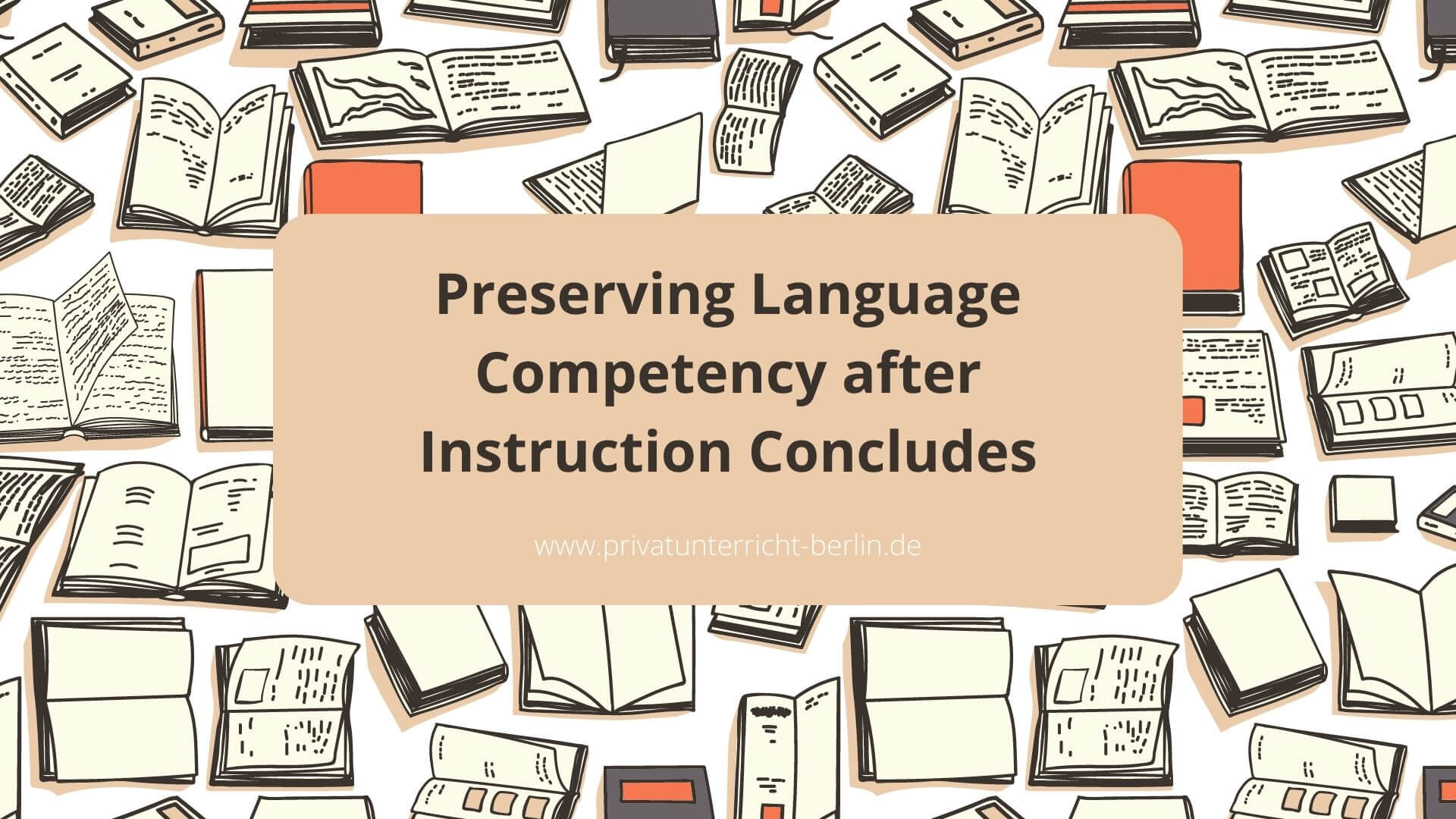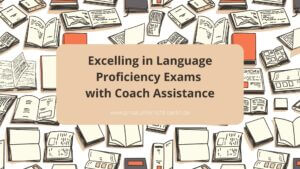Your Language Journey, Your Way: Start with a Private Tutor

Preserving Language Competency After Instruction Concludes
As a language preservation expert, I have seen firsthand the challenges individuals face when maintaining their language competency after instruction concludes. It is common for individuals to feel confident in their abilities during their language education, only to struggle once they no longer regularly practice or use the language.
The reality is that maintaining language competency requires ongoing effort and dedication outside of formal instruction. However, with the right strategies and mindset, it is possible to preserve your linguistic skills long after your initial training has ended.
This article will explore some effective techniques for preserving language competency and how you can integrate them into your daily routine.
Table of Contents
Identifying Your Language Goals
As a language preservation expert, I understand the importance of setting clear goals to track progress and adjust as necessary. Before beginning any language learning program or embarking on the journey of preserving your existing knowledge, it is crucial to identify what you hope to achieve in terms of proficiency level.
Are you aiming to become fluent? Or perhaps want to maintain conversational abilities? Whatever your goal, you must establish it before starting any language-learning endeavor. This will motivate the process and allow for better progress tracking and adjustment of plans as needed.
So take some time to reflect on your personal language goals and write them down – this will serve as a helpful guide along your journey toward linguistic mastery.
When creating a personal language learning plan, it’s crucial to remember these goals. Whether you’re working with a tutor or using self-study materials, having specific objectives will help tailor your approach accordingly.
In the next section, we’ll delve into how best to create an effective plan explicitly catered toward achieving your unique language goals.
Creating A Personal Language Learning Plan
As you progress in your language learning journey, it is crucial to track your progress to ensure that you retain the knowledge and skills acquired during instruction.
This can be done through regular self-assessment using tools such as practice exercises or quizzes. In addition, seeking feedback from a language partner or instructor can provide valuable insight into areas where improvement is needed.
Identifying language resources beyond traditional classroom instruction can also aid in preserving competency. These may include online courses, podcasts, TV shows or films in the target language, and conversation groups or meetups with native speakers.
Finding resources that align with your interests and goals is essential, as this will increase motivation and make language learning more enjoyable. By incorporating these methods of tracking progress and identifying additional resources for continued growth, learners can maintain their language competency long after formal instruction has ended.
Transitioning into the subsequent section about ‘incorporating language practice into your daily routine,’ we will discuss how making small changes in your daily life can help keep up the momentum toward achieving fluency.
Incorporating Language Practice Into Your Daily Routine
Now that you’ve completed your language instruction, finding ways to continue practicing the language to maintain and improve your competency is crucial.
One of the easiest and most accessible ways to incorporate language practice into your daily routine is through language learning apps. These apps are designed to provide users with interactive exercises, vocabulary drills, and grammar lessons, all within a user-friendly interface.
Another great way to keep up with language practice is by listening to language learning podcasts. Podcasts offer an immersive experience where listeners can hear native speakers conversing naturally in the target language. Not only does this exposure help learners refine their comprehension skills, but they also learn about cultural nuances and colloquialisms that may have yet to be covered in formal instruction.
By incorporating these tools into your daily routine, you can build on what you learned during instruction and continue progressing toward fluency.
As we move forward with our language preservation journey, it’s crucial not just to focus on particular study methods but also to engage with native speakers and the larger community of learners. This will enable us to put our knowledge into real-life situations while receiving feedback from those who speak the target language natively.
In addition, being part of a community can give us opportunities to share our experiences and get advice or recommendations for further resources or courses that might interest us along the way!
Engaging With Native Speakers And The Language Community
Engaging with Native Speakers and the Language Community is crucial in preserving language competency after instruction concludes. Language exchange programs offer an excellent opportunity to immerse oneself in the target culture, interact with native speakers, and practice communication skills.
Cultural immersion can be achieved through various means, such as attending local events, participating in cultural activities, or joining community groups. These experiences provide individuals with opportunities to connect with others who share similar interests while expanding their knowledge of the culture’s practices, customs, and traditions.
Additionally, engaging with native speakers provides learners valuable exposure to authentic speaking styles, colloquialisms, and expressions that may not have been covered during formal instruction. Here are some tips for making the most out of language exchanges:
- Establish clear goals and expectations for each session
- Take turns practicing both languages
- Provide feedback on pronunciation and grammar
By actively seeking out opportunities to engage with native speakers and participate in cultural activities through language exchange programs or other avenues within the community, individuals can maintain their proficiency level while also gaining insights into the nuances of the target language.
However, staying motivated and accountable for language learning requires dedication beyond these steps. Let us explore different strategies for maintaining momentum on this journey toward linguistic fluency.
Staying Motivated And Accountable For Language Learning
Learning a language is no different from growing a plant. The more you water it, the stronger and healthier it becomes. Similarly, consistent practice and exposure are vital to maintaining your language proficiency after instruction concludes. It’s easy to lose motivation when no teacher or structured class session pushes you forward. So how can you stay motivated and accountable for your language learning?
Setting realistic expectations is essential in keeping yourself on track. Don’t expect fluency overnight; instead, set achievable goals that will help you gradually improve over time. Maybe start with reading short articles or listening to podcasts in your target language for 30 minutes daily. Remember that progress takes time, but any effort put towards practicing the language will eventually add up.
To make things easier, finding reliable resources for continued learning can be helpful. Countless apps, websites, and online communities dedicated to language learning can provide support outside of traditional classroom settings. Some popular options include Duolingo, Memrise, and HelloTalk. In addition to these digital resources, consider joining local conversation groups or partnering with a native speaker for regular practice sessions.
| Pros | Cons |
|---|---|
| Learning at your own pace | Lack of structure |
| Greater flexibility in scheduling study times | Limited opportunity for feedback |
| A more diverse range of topics is available | Requires self-motivation |
Overall, staying motivated and accountable requires dedication and an open mind toward new ways of continuing your language journey beyond formal instruction settings. Realistic expectations and access to quality resources make preserving your hard-earned competency possible!
Frequently Asked Questions
How Long Does It Take To Become Fluent In A Language?
Several factors come into play when it comes to learning a new language.
Language immersion programs can certainly accelerate becoming fluent in a language, but the role of motivation must be considered.
The time it takes to become fluent in a language largely depends on their drive and dedication toward achieving this goal.
In my experience as a language preservation expert, highly motivated and committed individuals can achieve fluency within just a few months of regular practice and exposure to the target language.
On the other hand, those who need more motivation may take years or even decades to reach a similar level of proficiency.
So while enrolling in an immersive program is helpful, it’s vital for learners also to cultivate their intrinsic desire to learn the language if they want to see significant progress over time.
Are Online Language Learning Programs Effective?
As a language preservation expert, I am often asked about the effectiveness of online language learning programs compared to traditional classroom instruction.
While both methods have advantages and disadvantages, it ultimately depends on the individual’s learning style and preferences.
However, one challenge many learners face is maintaining their language proficiency after completing a program.
To combat this, strategies such as regularly practicing with native speakers or immersing oneself in the culture can help preserve language competency over time.
Overall, while online language learning has become increasingly popular and convenient, it is vital for learners to actively work towards maintaining their skills beyond formal instruction.
Can I Learn A Language Without Ever Speaking To A Native Speaker?
Learning a language without speaking to a native speaker is possible with the proper self-learning techniques and language-learning apps.
As an expert in language preservation, I have seen how technology has made it easier for individuals to learn new languages independently. With access to various online resources, learners can improve their listening, reading, writing, and speaking skills through virtual interactions with AI chatbots or voice recognition tools.
However, while these methods may be effective in mastering grammar rules and vocabulary, they must maintain the benefits of conversing with a person who speaks the language fluently.
To truly preserve one’s language competency beyond instruction concludes, it is important to seek opportunities for immersion and practice with native speakers whenever possible.
Should I Focus On Grammar Or Vocabulary When Learning A Language?
When learning a new language, you must balance your focus between grammar and vocabulary. While both are necessary components for communicating effectively, the importance of context must be balanced.
As a language preservation expert, I’ve seen many students become fixated on memorizing grammar rules or vocabulary words without fully understanding their usage in real-life situations. To truly preserve language competency, learners must have a solid foundation in both areas and emphasize the practical application of what they’re learning.
By doing so, they can ensure that their newfound skills will stick with them long after instruction concludes.
What Is The Best Way To Practice Speaking A Language If I Don’t Have Access To Native Speakers?
To truly master a language, it is important to practice speaking with others. However, not everyone has access to native speakers for conversation practice.
There are still ways to improve your speaking skills without fluent speakers.
Language exchange programs allow learners to communicate with other individuals studying their target language. This allows both parties to share knowledge and receive feedback on pronunciation and grammar usage.
Immersion programs offer another option by allowing learners to surround themselves with the language they wish to learn through living in a foreign country or attending classes taught entirely in the target language.
Practicing regularly using these methods can help maintain language competency even after formal instruction concludes.
Conclusion
In conclusion, language learning is a lifelong journey that requires dedication and consistent effort. While online programs can effectively provide structured instruction and practice opportunities, they cannot replace the value of speaking with native speakers or immersing oneself in the culture.
Balancing grammar and vocabulary when learning a new language is vital, as both are essential components for developing competency. However, it is equally important to prioritize speaking practice if fluency is the ultimate goal.
Even if access to native speakers is limited, there are still ways to practice conversation skills through language exchange programs or by recording and listening to oneself speak. As a language preservation expert, I urge learners not to view language acquisition as a one-time event but rather as an ongoing process of maintenance and improvement.
By incorporating regular practice and exposure into daily routines, individuals can preserve their language proficiency long after formal instruction has concluded.



